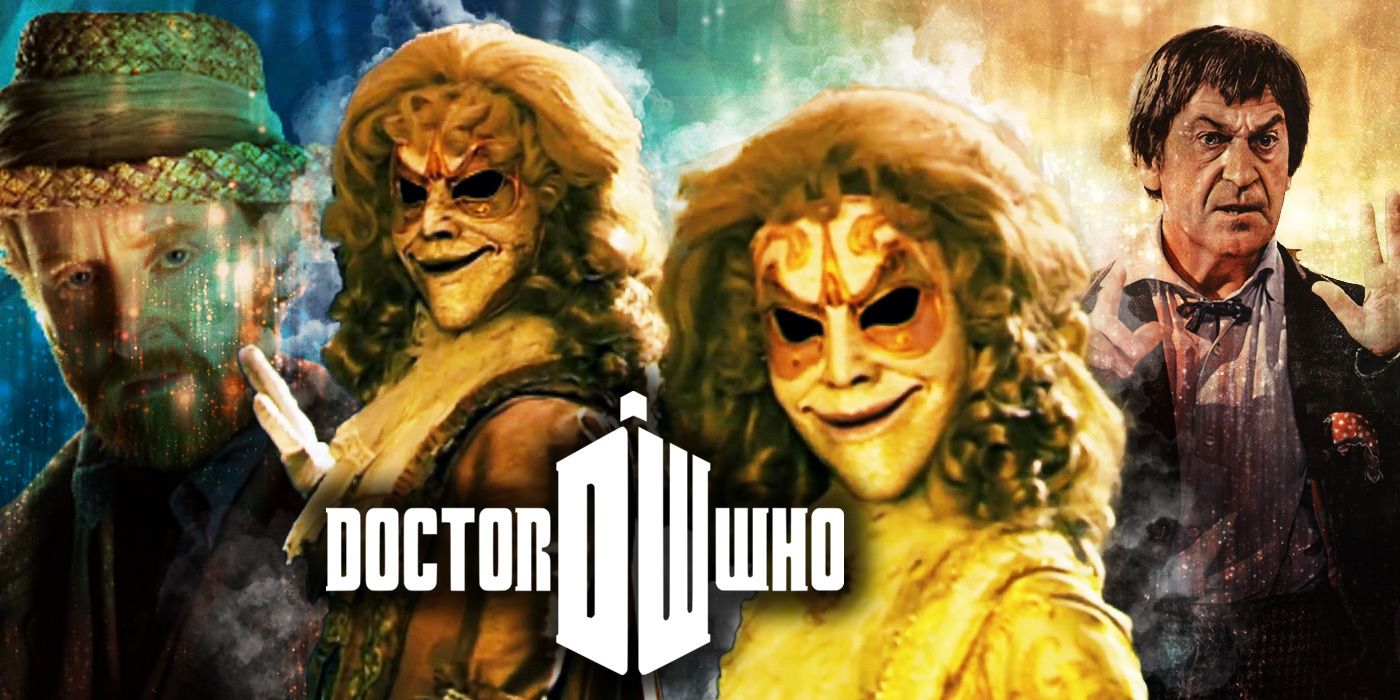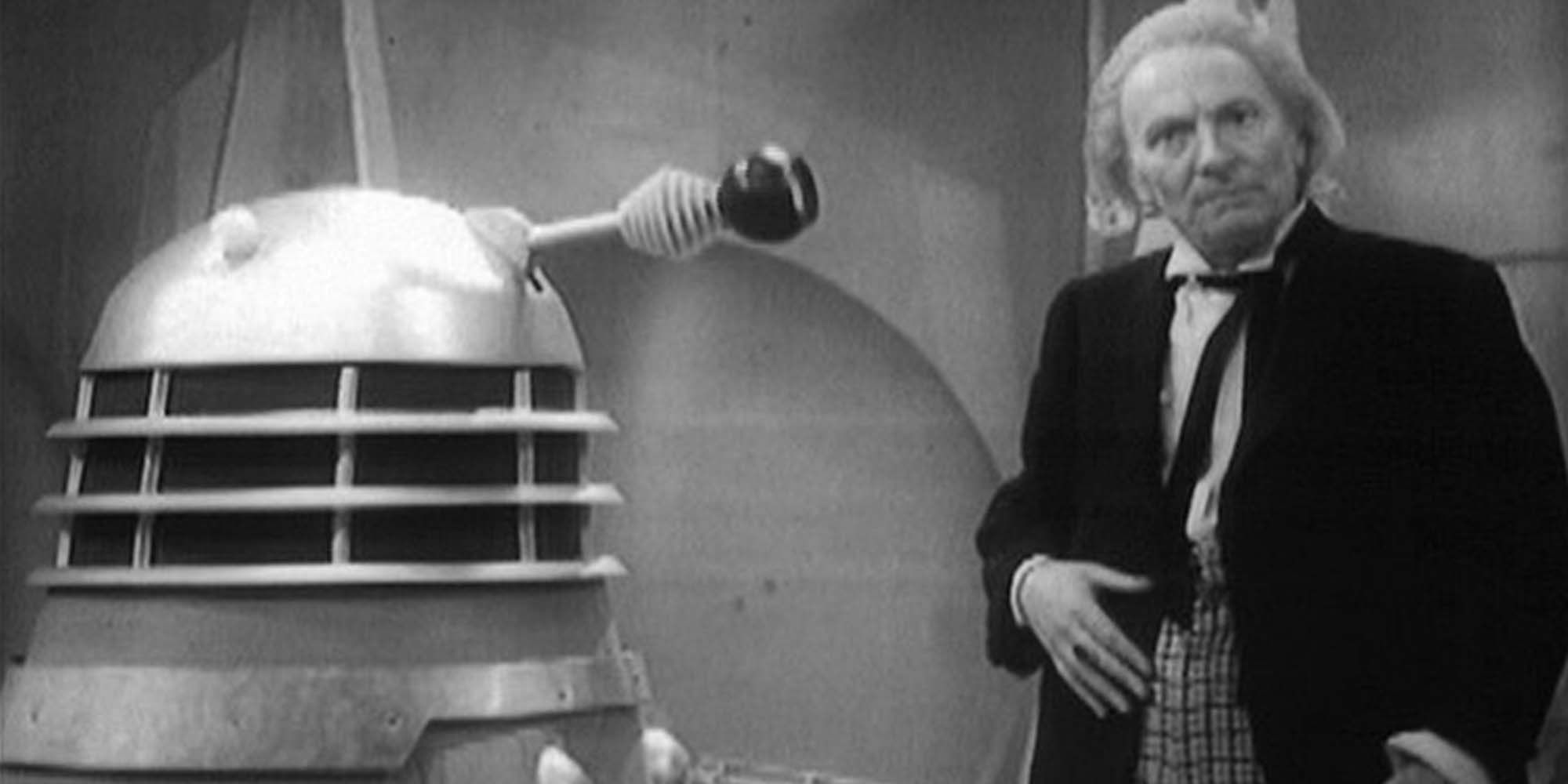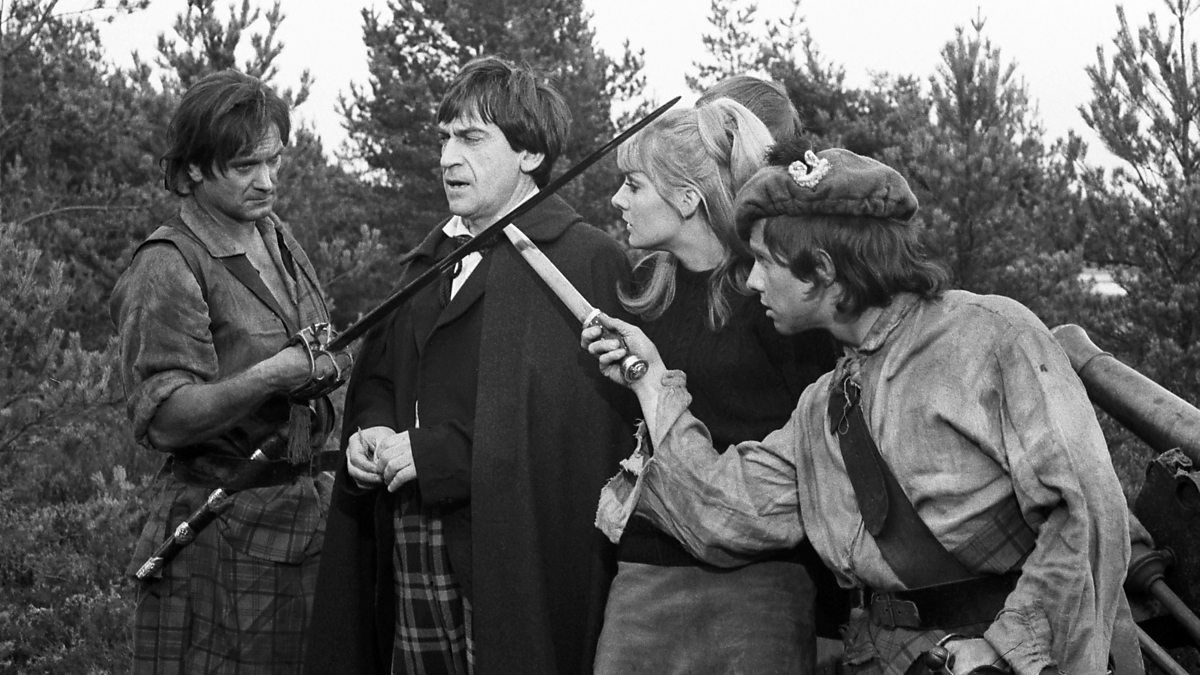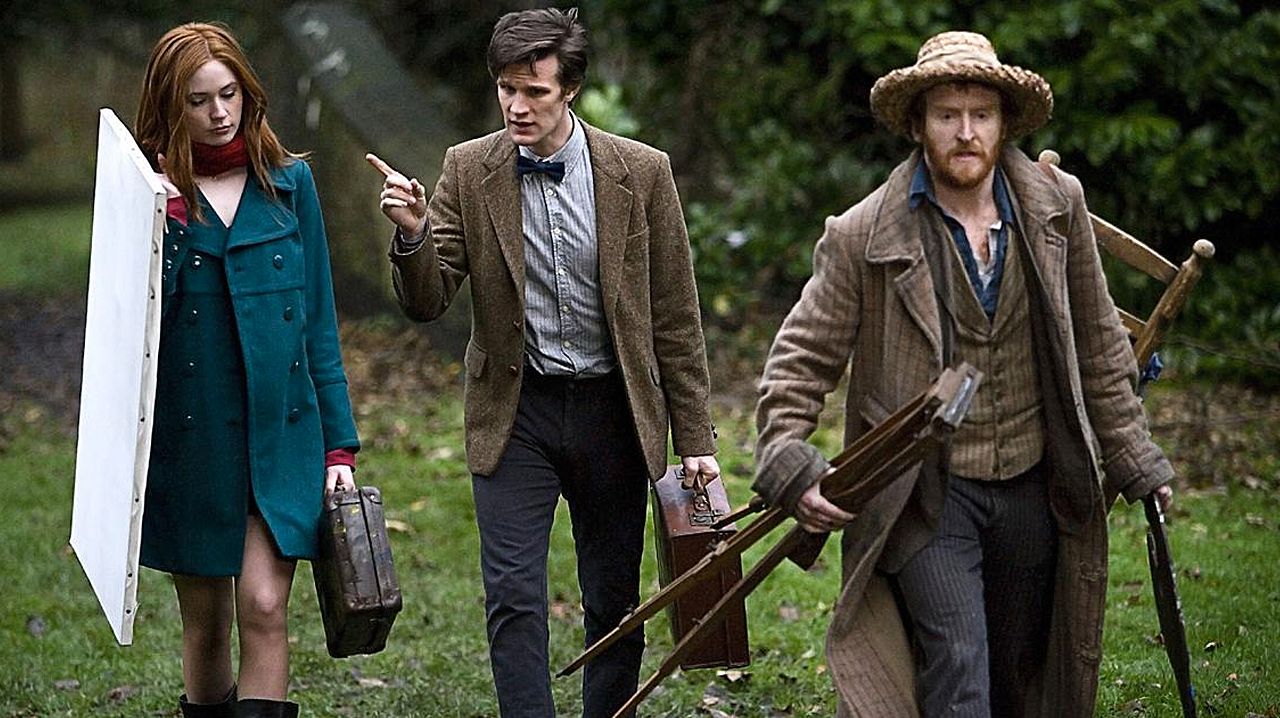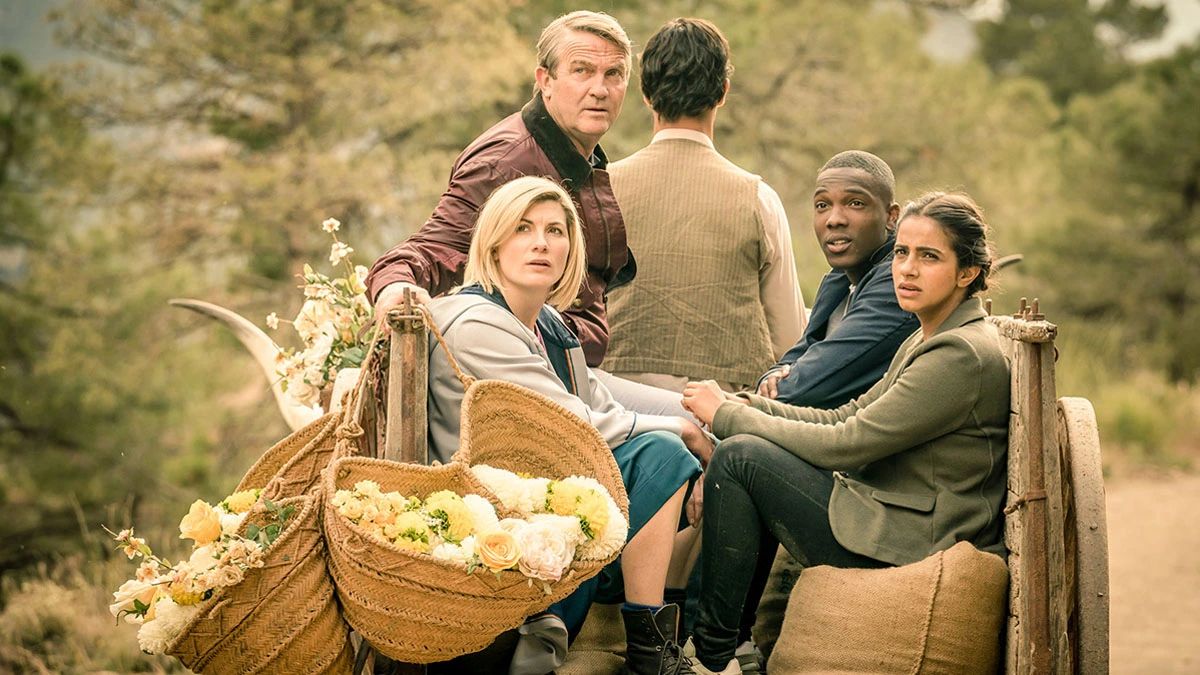Nearly 60 years on the air (granted, with a 16-year-long hiatus thrown in), Doctor Who is the longest-running sci-fi show in history. With 37 seasons and counting, plus a TV movie released in 1996, the BBC series has been around for almost as long as its quasi-immortal Time Lord protagonist has been alive, winning over generations of fans with its myriad of Doctors, companions, and, of course, aliens. Because if there’s one thing Doctor Who is known for is the menagerie of unearthly foes that the Doctor and his friends must face every week. Some, like the Silence and the Weeping Angels, are proper horror movie scary, while others border on the ridiculous - a few, like the iconic Daleks, succeed at being both funny and the stuff of nightmares at the same time. No matter if they’re on Earth or in space, or if they’re paying a visit to the past, taking a peek at the future, or just strolling through present-day London, if the Doctor spots something wrong, fans can rest assured that aliens will be behind it somehow.
But it hasn’t always been this way. Back in the 1960s, in the times of black-and-white TV sets and William Hartnell as the First Doctor, it wasn’t rare for the Time Lord to rub elbows with ancient Romans, Aztecs, Golden Age pirates, and even cavemen, all without a single extraterrestrial being in sight — except, of course, for the Doctor themself. Known by fans as "pure historicals," these episodes focused on misunderstandings, historical figures, and very much human conspiracies instead of alien invasions or weird, timey-wimey phenomena. The proportion of these pure historicals to traditional sci-fi serials, as the multi-episode story arcs of the time were called, was nearly one-to-one. Nowadays, however, it’s nearly impossible to find a period episode of Doctor Who without at least a tiny bit of alien interference. So what happened to the Doctor’s more earthly, historical adventures? Could be they making a comeback sometime in the near future? And, most importantly, should they?
When the first episode of Doctor Who aired in 1963, the series was intended as a somewhat educational show for children. Trips to the past were to be interspersed with adventures in the future or in space, with the former serving the purpose of teaching kids about history, and the latter aimed at educating them on science. It’s no coincidence that the Doctor’s first two companions, besides their granddaughter, Susan (Carole Ann Ford), were Barbara (Jacqueline Hill) and Ian (William Russell), respectively a history and a science teacher. Though science fiction elements have always been present in the show, the BBC meant for Doctor Who to be more serious and less pulpy than other genre productions of the time, with head of drama Sidney Newman stating that the series would feature “no bug-eyed monsters”. It was only due to problems in production that Terry Nation’s “The Daleks” became the show’s second serial, following the TARDIS’ four-episode long inaugural trip to the Stone Age.
Though Newman and the BBC would sure have opted to keep the Daleks locked in Nation’s mind if they’ve had the choice, the fact that the no bug-eyed monster sci-fi show had such a bug-eyed monster-heavy adventure for its second serial goes to show that the Doctor Who rulebook was quickly tossed out the window. The historical episodes soon lost their educational tone, and the sci-fi ones began to favor its more action and intrigue generating aspects than the actual science. Still, over the course of Hartnell’s three seasons and two serials as the Doctor, the show had a total of 12 pure historicals: "An Unearthly Child," "Marco Polo," "The Aztecs," "The Reign of Terror," "The Romans," "The Crusade," "The Myth Makers," "The Massacre of Saint Bartholomew’s Eve," "The Gunfighters," and "The Smugglers."
However, when Patrick Troughton took over as the Second Doctor in 1966, things were a bit different. Innes Lloyd had just been made the head producer of Doctor Who and felt the show needed a regeneration of its own. The plan was to make it more action-oriented, getting rid of elements that Lloyd believed slowed the series down and made for uninteresting television. According to the BBC episode guide for "The Smugglers," Lloyd had gathered from the Audience Research Report and other critical comments about "The Gunfighters" — a particularly unpopular First Doctor adventure in the Old West — that historicals were out of fashion. Thus, he put an end to this era of Doctor Who with "The Highlanders," the Second Doctor’s second serial, that takes place in 18th century Scotland and serves as an introduction for companion Jamie McCrimmon (Frazer Hines).
Historicals made a comeback 15 years later in 1982, in the Fifth Doctor’s (Peter Davison) two-parter "Black Orchid." Written by Terence Dudley, the serial takes the Doctor, Nyssa (Sarah Sutton), Adric (Matthew Waterhouse), and Tegan (Janet Fielding) to the 1920s. The crew is then invited to a costume ball in which two murders have occurred. In the end, the culprit is no alien entity, but a very human explorer called George (Gareth Milne).
Seven years after “Black Orchid” aired, Doctor Who was canceled, eventually to return in 2005 and entirely revamped to boot. Under Russell T. Davies, the show adopted a monster-of-the-week format instead of the old-fashioned serials, devoted whole episodes to the companions’ backstories and personal lives, had seasons with overarching plots, and introduced the Time War and the idea of the Doctor as the last of the Time Lords. It also brought back many beloved elements from Classic Who, from the Daleks to Sarah Jane (Elisabeth Sladen) and K-9. Historical episodes, though, remain a thing of the past. Neither Davies nor his two successors, Steven Moffat and Chris Chibnall, dared to give the aliens a day off. This isn’t to say Doctor Who hasn’t had a history-driven adventure since 1982. Many of the show’s current fan favorites, like the Tenth Doctor’s (David Tennant) “The Girl in the Fireplace” and the Eleventh’s (Matt Smith) "Vincent and the Doctor," revolve around historical figures and events. However, they belong to a different Doctor Who subgenre: the pseudo-historical.
The pseudo-historical made its debut in 1965, with the four-parter "The Time Meddler," in which the First Doctor, Vicki (Maureen O’Brien), and Steven (Peter Purves) travel to 11th century England, just before a Viking invasion. There, they run into a strange monk (Peter Butterworth) living alone in a monastery and fooling the townspeople with a hidden gramophone playing recordings of Gregorian chant. Hijinks ensue, and the TARDIS crew finds out the monk has a TARDIS of his own and has set himself on a mission to alter human history. “The Time Meddler” paved the way for the future of Doctor Who historical adventures: whenever the Doctor is stuck in the past, they must take care of some alien business going on in the wrong place, at the wrong time. If there’s Churchill, there are Daleks; if there’s Shakespeare, there are outer-space witches crafting spells from the power of words.
And therein lies the first issue with ditching true historicals in favor of pseudo-historicals: predictability. Doctor Who has become a kind of reverse Scooby-Doo, in which we find out that Old Man Jenkins has been an alien all along. Of course, there’s nothing wrong with that. Scooby-Doo has been alive and kicking since 1969, almost as long as Doctor Who, constantly updating its style, but hanging on to the formula that made it work in the first place. However, even the Mystery Machine gang has had to switch their game up every now and then, facing actual supernatural beings in movies like Scooby-Doo on Zombie Island and Scooby-Doo 2: Monsters Unleashed. Perhaps Doctor Who could benefit from replacing some of its pseudo-historical adventures with more down-to-earth plots.
On first glance, this idea might sound silly: Doctor Who has established itself as a science fiction show, and, therefore, fans are expecting to watch sci-fi stories. Wouldn’t they tune off, as Innes Lloyd believed, if they had to watch an exclusively historical adventure? First of all, time travel is in itself a sci-fi element, as is the Doctor — a regenerating alien with two hearts. Secondly, the series’ structure has changed considerably since its early years. Watching an hour-long historical episode wouldn’t be the same as following a serial divided into four or six parts. Furthermore, the overarching plots of New Who mean it's harder for fans to skip an entire episode without missing something important.
Lastly, there’s no reason why a historical episode should be boring. Sure, “The Gunfighters” had a poor reception and is still largely considered one of the First Doctor’s worst serials, but let’s take a look at other, more successful examples. “Marco Polo” and “The Massacre of St. Bartholomew’s Eve” are frequently cited as classics of the pure historical genre, but, unfortunately, they are also part of the list of Doctor Who’s missing episodes. "The Romans," however, has managed to survive the past 57 years. The serial received generally positive reviews at the time it aired and had a good viewership over the course of its four episodes. In it, Barbara and Ian are captured by slave traders. Barbara is sold to a member of Emperor Nero’s (Derek Francis) court and Ian is forced to become a gladiator, while the Doctor is mistaken for a lyre player and asked to perform at an imperial banquet. It’s not long before he realizes the date and rushes to save his friends from Nero’s madness. Alas, in a hurry, he accidentally sets fire to Nero’s parchments, giving him the idea for the Great Fire of Rome. With a few changes, it’s not hard to imagine the same adventure starring Jodie Whittaker’s Thirteenth Doctor and the TARDIS’ fam, or Smith’s Eleventh Doctor and the Ponds.
Chibnall, who took over as showrunner at the same time as Whittaker became the Doctor, in 2018, has stated in a 2019 interview that he would happily revisit the historical format. However, nothing has been done so far. In the interview, Chibnall spoke of the Season 11 episode “Rosa”, a story about civil rights activist Rosa Parks (Vinette Robinson) that had very few sci-fi elements. But while the racist space time-traveler seeking to stop Rosa from kicking off the Montgomery bus boycott packs a strong message about white supremacists current attempts to reshape history, just as the monster that only Van Gogh (Tony Curran) can see makes “Vincent and the Doctor” a powerful story about depression, some recent pseudo-historicals would have fared way better without any alien intervention. Frequently remembered as one of the best episodes of the Chibnall-Whittaker era, “Demons of the Punjab” has the Doctor traveling to what is now the border between India and Pakistan in 1947 to uncover the truth behind companion Yasmin’s (Mandip Gill) family history. On the eve of a separatist war, the Doctor runs into the Thijarians, the last remnants of an alien race that have dedicated themselves to witnessing the last breaths of those that die alone. The Thijarians don’t do much over the course of the story besides giving the Doctor something to chase and distracting viewers from the sad tale of Yasmin’s grandmother and the partition of India. Wouldn’t “Demons of the Punjab” have been much better and more powerful without them?
Both Chibnall and Whittaker are set to leave Doctor Who by the end of 2022. Former showrunner Russell T. Davies has announced his return to the show, while who will take over as the Fourteenth Doctor is still anyone’s guess. Judging from the series’ recent history, it is unlikely that the pure historicals will make a comeback. However, questions about the genre have already been asked, and a historical adventure would be a nice surprise for viewers that have already gotten used to the same old format. Perhaps it’s time for the BBC to pop into the TARDIS and bring the pure historical for a walk in the 21st century.

